Month: February 2021
Voices of CS: MS Bridge Student Testimonials
The CS@CU MS Bridge Program in Computer Science equips students from non-computer science backgrounds with the skills and knowledge necessary to build careers in technology.
The program is designed as a year of rigorous “bridge” coursework composed of introductory CS courses. This transition prepares students for a seamless entrance into Columbia Engineering’s MS program in Computer Science after the bridge year.
Each student takes a different path through the program and most of the first cohort is done with their bridge year. Below are some of their experiences from the past year.

Ethan Garry
BA Mathematics and Statistics, University of Rochester 2016
Associate of the Society of Actuaries in 2019
I tried learning from online resources for several months before applying to the MS Bridge program. CS is a demanding discipline and in order to rapidly evolve my skills, I needed an intense academic setting that Columbia has provided for me. I took four bridge courses over the past year and started the MS this spring. The four bridge courses were excellent preparation for my current coursework and they also provided sufficient knowledge to land a front-end development internship with SuperWorld (a virtual real estate marketplace).
After the program, I hope to either become a front-end web developer or a full-stack web developer for a small tech company focused on helping local businesses.
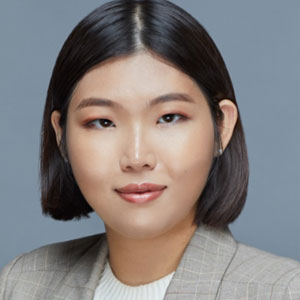
Muhan Liang
MS Strategic Communication, Columbia University School of Professional Studies 2020
BS Communications Boston University 2018
I come from a communications background and I didn’t have any former knowledge of computer science. The MS Bridge program has provided a valuable and high-quality experience in gaining all the necessary foundational skills in computer science.
I am really excited about transitioning to the master’s program this semester!
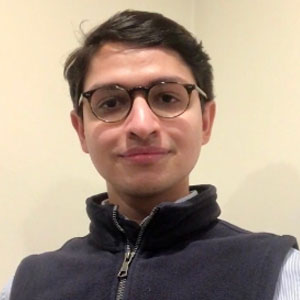
Nand Chandravadia
BS Neuroscience, University of California, Los Angeles 2017
I have done research on brain-computer interfaces that piqued my interest in the intersection of neuroscience and computer science. This pushed me to apply to the MS Bridge program to further my knowledge in CS and gain the necessary acumen and technical skills to pursue my research interests. The most important thing I have learned is to view the world from the perspective of a computer scientist. Especially when trying to tackle a research question, a computational mindset can be very helpful in distilling the essence of a question and coming up with a tractable solution (if one exists).
After the MS program, I plan on pursuing a PhD and I am very excited to take the knowledge learned from inside the classroom and apply it to the outside world.
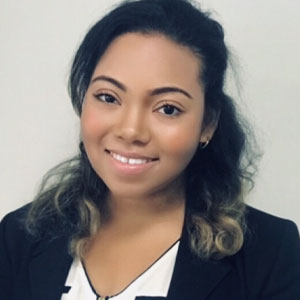
Krystal Briggs
BA Speech-Language Pathology and Linguistics, Brooklyn College Honors Academy 2017
I feel confident that Columbia’s MS Bridge Program will prepare me for a career in medical tech. The program provides exceptional academic advising with professors who truly care about the success of their students.
Once I reach the master’s portion of the program I look forward to specializing in bioinformatics and I plan to further extend my education and work towards bridging the gap in healthcare amongst underrepresented communities.
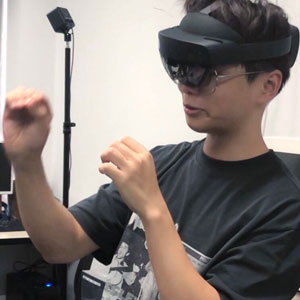
ZiJia Chen
BA Liberal Arts, The New School 2020
I have started businesses where I created websites and applications but I realized that to truly make these startups successful I needed to learn more about CS and build my technical skills. I want to integrate what I will learn from the MS program with my design background to create interdisciplinary innovation and apply it to entrepreneurship.
I plan to take advantage of my time at Columbia to learn as much as I can, build relationships with classmates and professors, and work with Columbia’s Startup Lab to create something that will help humanity.
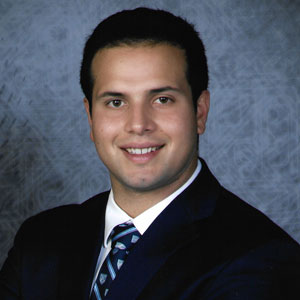
Matthew Duran
BA Economics and Mathematics, School of General Studies of Columbia University 2020
Former 3B with the New York Yankees
Now that I have a good theoretical and programming foundation in computer science, I plan to complete the software systems track which will let me dive deeper into the core of modern computing and build systems that everyone uses. I will also take electives such as artificial intelligence and machine learning.
Honestly, I’m excited about the rest of the program because the possibilities are endless.
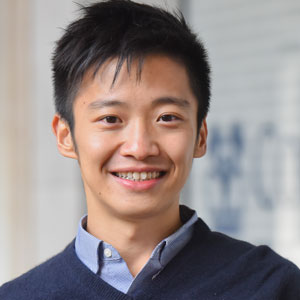
Lawrence Lai
BS Accounting, SUNY Binghamton 2011
Aside from doing all the coursework and studying, I have made time to participate in a research project and join a couple of hackathons. These are some of the great opportunities offered by the school.
Overall, the program has been challenging and rewarding at the same time. I look forward to all the exciting work that I will be doing in grad school and beyond.
Toyota Research Institute Launches Next Phase of Collaborative Research With Diverse Roster of World‑Class Academic Institutions
Shuran Song and Carl Vondrick are among the awardees chosen for their artificial intelligence (AI) research. The program aims to use AI for societal good.
Cross-disciplinary Research Highlighted in This Year’s Distinguished Lectures Series
The Distinguished Lecture series brings computer scientists to Columbia to discuss current issues and research that are affecting their particular fields. This year, eight experts covered topics ranging from machine learning, human-computer interaction, neural language models, law and public policy, psychology, and computer architecture.
Below are a couple of the lectures from prominent faculty from universities across the country.
- Three Ways Machine Learning Fails and What to Do About Them
Costis Daskalakis, MIT
- Intuitive Reasoning as (Un)supervised Neural Generation
Yejin Choi, University of Washington
- Computer Science and Law: Opportunities and Research Directions
Joan Feigenbaum, Yale
- Data Orchestration is the New Compute: Computer Architecture for the Post-Moore
Era Joel Emer, NVIDIA/MIT
- Theoretical Reflections on Quantum Supremacy
Umesh Vazirani, UC Berkeley
Moti Yung Named Recipient of the 2021 IEEE Computer Society Women of ENIAC Computer Pioneer Award
The award recognizes Moti Yung’s significant contributions to the field of cryptography, specifically, coinventing malicious cryptography and pioneering contributions to distributed cryptosystems.
Papers That Explore Novel Methods to Use Artificial Intelligence Accepted to AAAI 21
Research from the department was accepted to the 35th AAAI Conference on Artificial Intelligence. The conference promotes research in artificial intelligence (AI) and scientific exchange among AI researchers, practitioners, scientists, and engineers in affiliated disciplines.
Automated Symbolic Law Discovery: A Computer Vision Approach
Hengrui Xing Columbia University, Ansaf Salleb-Aouissi Columbia University, Nakul Verma Columbia University
One of the most exciting applications of modern artificial intelligence is to automatically discover scientific laws from experimental data. This is not a trivial problem as it involves searching for a complex mathematical relationship over a large set of explanatory variables and operators that can be combined in an infinite number of ways. Inspired by the incredible success of deep learning in computer vision, the authors tackle this problem by adapting various successful network architectures into the symbolic law discovery pipeline. The novelty of this new approach is in (1) encoding the input data as an image with super-resolution, (2) developing an appropriate deep network pipeline, and (3) predicting the importance of each mathematical operator from the relationship image. This allowed to prior the exponentially large search with the predicted importance of the symbolic operators, which can significantly accelerate the discovery process.
The model was then applied to a variety of plausible relationships—both simulated and from physics and mathematics domains—involving different dimensions and constituents. The authors show that their model is able to identify the underlying operators from data, achieving a high accuracy and AUC (91% and 0.96 on average resp.) for systems with as many as ten independent variables. Their method significantly outperforms the current state of the art in terms of data fitting (R^2), discovery rate (recovering the true relationship), and succinctness (output formula complexity). The discovered equations can be seen as first drafts of scientific laws that can be helpful to the scientists for (1) hypothesis building, and (2) understanding the complex underlying structure of the studied phenomena. This novel approach holds a real promise to help speed up the rate of scientific discovery.
Bounding Causal Effects on Continuous Outcome
Junzhe Zhang Columbia University, Elias Bareinboim Columbia University
One of the most common methods for policy learning used throughout the empirical sciences is the use of randomization of the treatment assignment. This method is considered the gold standard within many disciplines and can be traced back, at least, to Fisher (Fisher 1935) and Neyman (Neyman 1923). Whenever human subjects are at the center of the experiment, unfortunately, issues of non-compliance arise. Namely, subjects do not necessarily follow the experimental protocol and end up doing what they want. It is well-understood that under such conditions, unobserved confounding bias will emerge. For instance, subjects who did not comply with the treatment assignment may be precisely those who would have responded adversely to the treatment. Therefore, the actual causal effects of the treatment, when it is applied uniformly to the population, might be substantially less effective than the data reveals. Moreover, since one does not observe how subjects decide/respond to the realized treatment, the actual treatment effects are not uniquely computably from the collected data, called non-identifiable.
Robins (1989) and Manski (1990) derived the first informative bounds over the causal effects from studies with imperfect compliance under a set of non-parametric assumptions called instrumental variables (IV). In their seminal work, Balke and Pearl (1994a, 1997) improved earlier results by employing an algebraic method to derive analytic expressions of the causal bounds, which are provably optimal. However, this approach assumes the primary outcome to be discrete and finite. Solving such a program could be intractable when high-dimensional context variables are present.
This paper presents novel non-parametric methods to bound causal effects on the continuous outcome from studies with imperfect compliance. These methods could be generalized to settings with a high-dimensional context. Perhaps surprisingly, this paper introduced a latent data representation that could characterize all constraints on the observational and interventional distributions implied by IV assumptions, even when the primary outcome is continuous. Such representation allows one to reduce the original bounding problem to a series of linear programs. Solve these programs, therefore, leads to tight causal bounds.
Estimating Identifiable Causal Effects through Double Machine Learning
Yonghan Jung, Jin Tian, Elias Bareinboim Columbia University
Learning causal effects from observational data is a pervasive challenge found throughout the data-intensive sciences. General methods of determining the identifiability of causal effect from a combination of observational data and causal knowledge about the underlying system have been well-understood in theory. In practice, however, there are still challenges to estimating identifiable causal functionals from finite samples. Recently, a novel approach, named double/debiased machine learning (DML) (Chernozhukov et al. 2018), has been proposed to learn parameters leveraging modern machine learning techniques, which are both robust to model misspecification (‘doubly robust’) and slow convergence (‘debiased’). Still, DML has only been used for causal estimation in settings when the back-door condition (also known as conditional ignorability) holds.
This paper aims to bridge this gap by developing a general class of estimators for any identifiable causal functionals that exhibit robustness properties of DML estimators, which the authors called ‘DML-ID.’ In particular, they provide a complete procedure for deriving an essential ingredient of the DML estimator called an influence function (IF) and construct a general class of estimators based on the IF. This means that one can estimate any causal functional and enjoy two robustness properties, doubly robustness and debiasedness.
Ref-NMS: Breaking Proposal Bottlenecks in Two-Stage Referring Expression Grounding
Long Chen Tencent AI Lab, Wenbo Ma Zhejiang University, Jun Xiao Zhejiang University, Hanwang Zhang Nanyang Technological University, Shih-Fu Chang Columbia University
The prevailing framework for solving referring expression grounding is based on a two-stage process: 1) detecting proposals with an object detector and 2) grounding the referent to one of the proposals. Existing two-stage solutions mostly focus on the grounding step, which aims to align the expressions with the proposals.
In this paper, the researchers argue that these methods overlook an obvious mismatch between the roles of proposals in the two stages: they generate proposals solely based on the detection confidence (i.e., expression-agnostic), hoping that the proposals contain all right instances in the expression (i.e., expression-aware). Due to this mismatch, current two-stage methods suffer from a severe performance drop between detected and ground-truth proposals.
The paper proposes Ref-NMS, which is the first method to yield expression-aware proposals at the first stage. Ref-NMS regards all nouns in the expression as critical objects, and introduces a lightweight module to predict a score for aligning each box with a critical object. These scores can guide the NMS operation to filter out the boxes irrelevant to the expression, increasing the recall of critical objects, resulting in a significantly improved grounding performance.
Since RefNMS is agnostic to the grounding step, it can be easily integrated into any state-of-the-art two-stage method. Extensive ablation studies on several backbones, benchmarks, and tasks consistently demonstrate the superiority of Ref-NMS. Codes are available at: https://github.com/ChopinSharp/ref-nms.
North Korea-Backed Hackers Targeting Security Researchers
Columbia Center of AI Technology Announces Faculty Research Awards and Two PhD Student Fellowships
CS researchers are among the recipients of the inaugural awards from the Columbia Center of Artificial Intelligence Technology (CAIT). Amazon is providing $5 million in funding over five years to support research, education, and outreach programs.

